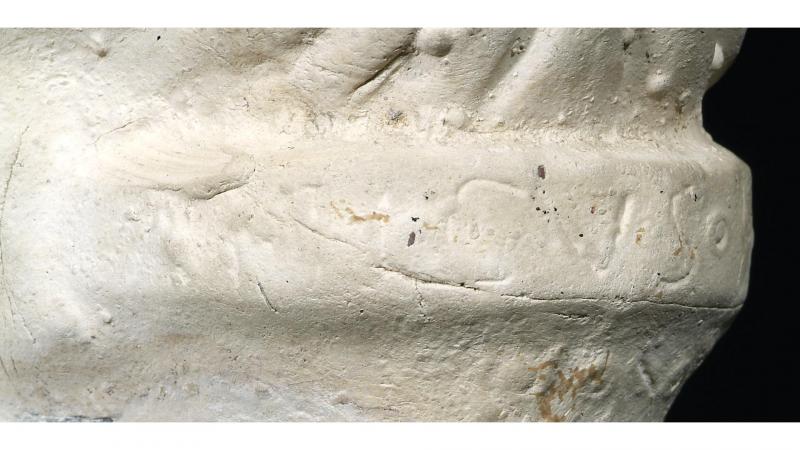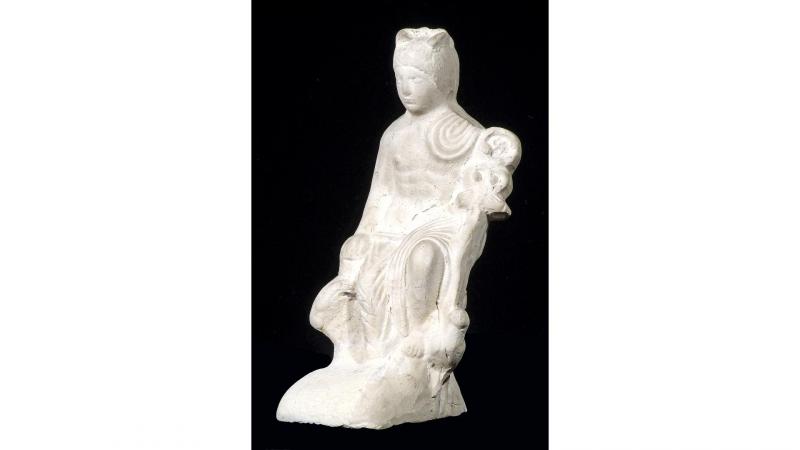This white clay statuette, which was made using a bivalve mould, was discovered in Hoeselt (in the province of Limburg) in substrates that were uncovered in the 19th century. It depicts Mercury seated on a rock, accompanied by his symbolic animals: a goat, a cock and a turtle. Two small wings emerge from his curly hair, alluding to his speed as a messenger of the gods. The caduceus, which was obtained from Apollo in exchange for a lyre, is placed against his left arm. A bag is depicted under his right hand, a symbol of the trade over which he presided.
The bust, which is characterised by its suggested musculature, is draped with a chlamys across the left shoulder, which covers his back and gathers on the legs. The folds of the draping, which are rendered with great finesse, suggest that the statuette was retouched before it was cast.
An uncertain inscription, spread over two lines, is found at the back of the rock. The first part, which is located on the edge of the seat, mentions the name of the potter who modelled the statuette. Only the letters ICVS FIICIT ([ ]icus did) are still legible (Atticus?). Below the signature, in the concave part of the rock, the end of the inscription, which could correspond to the letters C.C.A.A., the initials of the ancient city of Cologne, can be seen.
This statuette of Colonial production, which has many affinities with the sculptural figure of the Horn altar dedicated to the Mercury Arverne, was probably intended for a larary, a small domestic altar dedicated to the protective deities of the home.


